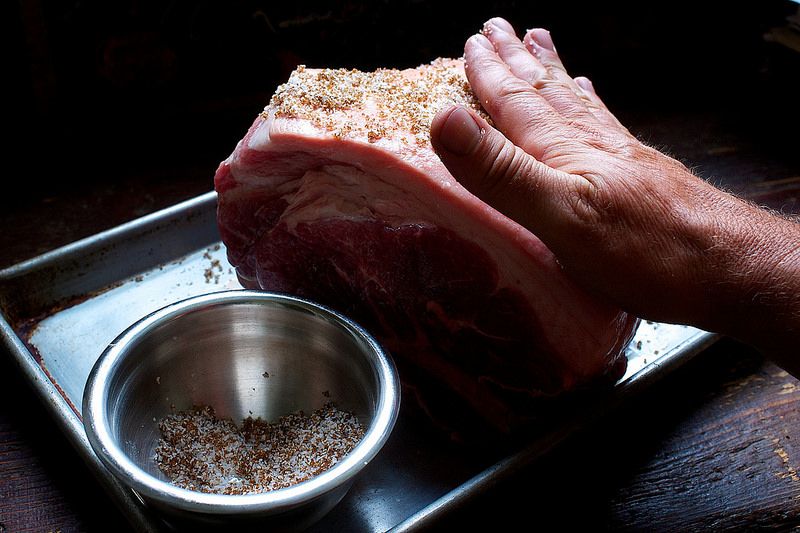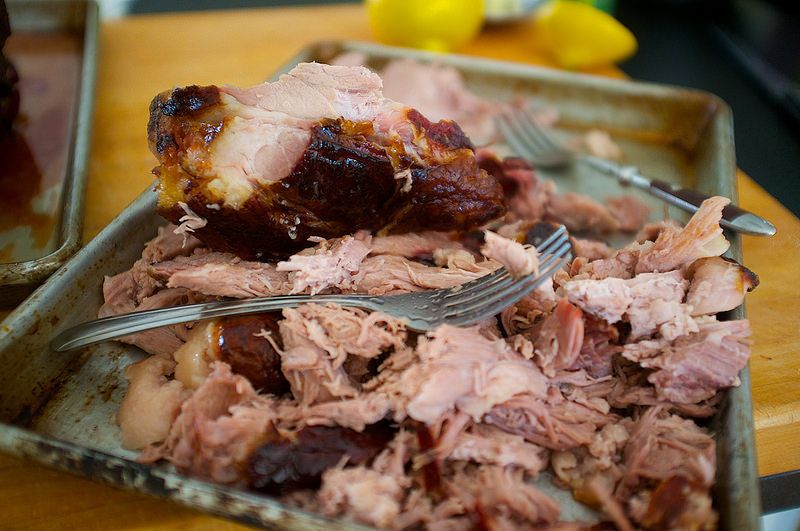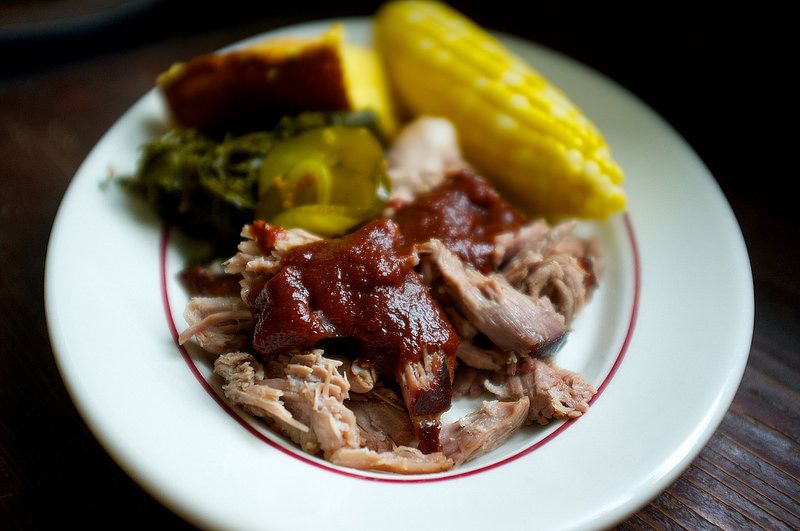Sunday Dinners comes to us from our own chef/photojournalist/farmer/father figure Tom Hirschfeld, featuring his stunning photography and Indiana farmhouse family meals.
Today: A smoky, fuss-free pulled pork sandwich -- just in time for barbecue season.

The barbecue we know today is a far cry from that of years past, when you were simply handed a platter of meat and sent outside to a grill.
We have made barbecue complicated. We act as though it can only be great if you have a huge smoker attached to a trailer pulled by a souped-up, four-wheel drive -- I call it over-compensating for something. We’ve taken barbecue to the extreme, and made it feel out of reach for the average Joe or Jane.
But it doesn’t have to be. There are the fundamental barbecue rules, and once you understand these, it’s more about your method than your equipment. After all, 200 degrees is 200 degrees, no matter if it's inside your smoker, your oven, or your crockpot.
More: We might be all about method, but don't forget your essential grilling tools.

Don’t get me wrong: If you barbecue, enjoy smoked foods, and find yourself cooking outside through the winter, then by all means, invest in a high-end smoker or grill. It’s no different than spending money on a muscle car, or woodworking, or refurbishing a sailboat. It’s an edible hobby for some -- there's nothing wrong with that. But for those of us that don’t want (or need) another hobby, a grill will suffice.
Generally speaking, the goal of good barbecue is to take a fatty, tough cut of meat and cook it at a low enough temperature that you break down and tenderize the muscle, without rendering the fat away. In some ways, the cooking process is similar to sous vide -- but where sous vide is largely unattended time, barbecue takes some tending.

Be it pulled pork or brisket, what I don’t want -- and what you don’t want either -- is to get to the end of a long process, only to take a bite and need a swig of beer to get it down. There's nothing worse than getting the hiccups every time you attempt to swallow some dry brisket. No amount of sauce is going to make it go down any easier; dry is dry, and it will stay that way.
Here's the thing: There is no need to tend a fire for hours on end, unless of course you want to. If you want hassle-free smoked barbecue that will stand up against any meat out there, you can get it -- with minimal fuss.
But first, get to know your barbecue commandments:
1. The good news is, a little smoke goes a long way. You can easily get forty minutes of smoke onto the meat, then finish cooking your pulled pork in the oven. The smoke will be an addition, rather then the dominant flavor, and the cooking process is largely unattended at this point. Simply cook your meat over indirect, low heat and add a few water-soaked hickory chips to the fire side of your grill. Once the smoke is rolling, place the meat as far away from the heat source as you can, and close the lid.
More: Want all that smoky flavor without a smoker -- or a grill? Pick up a smoking gun.
2. Always build the pellicle: This is what lets the smoke stick to the meat and allows for the beautiful mahogany color of smoked protein. The pellicle is formed by seasoning the meat and letting it sit uncovered in the fridge overnight. It is as much a visual process as it is mechanical.
3. Use a sheet tray with edges when handling your cooked protein so you can collect any and all accumulated juices. In the end, mix these back into the shredded meat for added moisture and flavor.
4. Take the time to make your barbecue sauce. It is the most important step in the process. I don’t get the notion of spending all day cooking the meat only to dump a bottled sauce onto it.
5. Don’t cook blindly. Figure out what your temperature and time factors are, and make sure you don’t overcook your food. My goal is to have the meat shredded and tender, but rarely do I smoke or roast something until it is falling off the bone; by then, the meat is often flavorless and dry.

Pulled Pork with Stubbs Sauce
Serves 6 to 8
For the Picnic:
6 1/2 pounds bone-in picnic shoulder (pork shoulder)
3 tablespoons kosher salt plus extra for seasoning
1 1/2 tablespoons brown sugar
2 cups hickory chips, soaked in water for 24 hours then drained
For the Stubbs Sauce:
2 cups Pomi brand strained tomatoes
2 1/2 tablespoons tomato paste
1/2 cup sugar
2 tablespoons molasses
1/2 cup vinegar
1 teaspoon paprika
1/2 teaspoon garlic powder
1/2 teaspoon onion powder
1 teaspoon ancho chile powder
1 tablespoon fresh ground black pepper
Kosher salt, as needed
See the full recipe (and save and print it) here.
Photos by Tom Hirschfeld






See what other Food52 readers are saying.